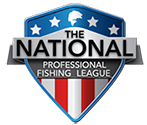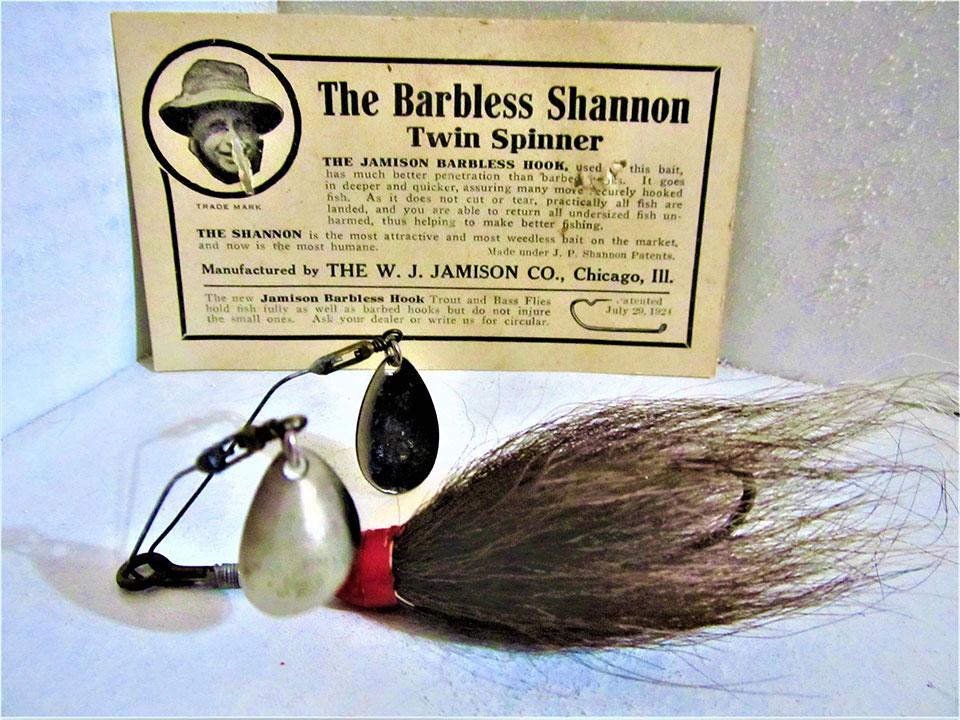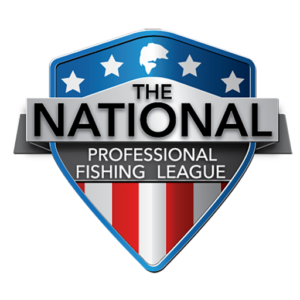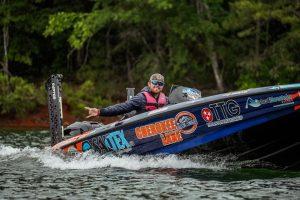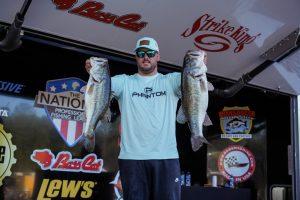Story by Ken Duke
Few fishing lures look as little like bass food as the venerable spinnerbait. It’s really just a twisted piece of wire, a lead head to give it casting weight and to keel the lure, and a spinner blade or two to create flash and vibration. Add a skirt to offer a target, some color and maybe to conceal the hook, and you’re set.
The first spinnerbait was the Shannon Twin Spinner, designed by Wisconsin’s Jesse Shannon (1878-1931) in about 1915 and patented a few years later. If you held one today, you’d recognize it as a spinnerbait — a twin spin, with three arms. One of the arms holds a lead head and hook covered in bucktail. The other two arms each hold a single blade on the end of a swivel.
Tackle entrepreneur and showman “Smilin’ Bill” Jamison (1865-1926) knew a good bass fishing thing when he saw one and bought the rights to the Shannon Twin Spinner in about 1917. It was very popular for several decades, but by the 1960s the twin spin had mostly given way to the modern “safety-pin” style spinnerbait.
By the 1970s, it was often said that the spinnerbait was the most versatile lure in a bass angler’s tackle box, and professional anglers like Jimmy Houston and Ricky Green had the tournament success to back up such a bold statement.
Several things stoked that early success for the spinnerbait. For one, the spinnerbait can be fished at any level of the water column, from gurgling across the surface to crawling across the bottom. All you have to do is alter your retrieve speed. Start cranking fast as soon as the lure hits the water, and the bait will stay shallow. Let the bait sink and crank it slow, and it stays deep. It can be effective either way or somewhere in between.
For another, the spinnerbait is supremely adaptable. With one blade, it’s great as a dropping bait. The spinner blade will “helicopter” as it falls. A single spin is also best when you want to “slow roll” the lure across the bottom — a technique that’s particularly effective in the pre-spawn period.
Add a second — or even a third — blade to an arm, and the lure has more “lift,” pulling itself toward the surface even on a moderate retrieve.
Because it works at any depth and at a variety of speeds, it’s a year-round option. And because it can be fished fast and comes through wood and weeds well, it’s a great choice for covering water in search of fish and productive areas.
Because the lure has a lot of vibration, it’s particularly effective in dingy or muddy water. In fact, the spinnerbait’s success in dirty water has always been a big part of its appeal. Bass can use senses other than sight to find and eat it.
Because spinnerbaits tend to have a large profile, they’re appealing to big bass looking for a big meal. The single hook of a spinnerbait is tremendously effective at sticking and holding a bass.
The period from the 1960s through the 1990s was the heyday of the spinnerbait, but they’ve never fallen out of fashion with the fish.
Three things took the spinnerbait out of the bass fishing spotlight around the turn of the millennium.
First, as our big reservoirs have aged, they’ve become less fertile and clearer. The spinnerbait — which really resembles nothing in nature — can look quite unnatural under the harsh light of day in gin-clear water. Sophisticated angling pressure shifted to more finesse options and away from such “power” or “chunk-and-wind” methods.
Second, The square-billed crankbait — which has been around since the early 1970s (Fred Young’s Big-O) — found itself in the spotlight after some big tournament wins. Anglers shifted to the hot baits and it’s possible that even the bass were suffering from a bit of spinnerbait fatigue.
Third, Rad Lures introduced the ChatterBait, a “bladed jig” lure that filled a lot of the same niches as the spinnerbait but with a very different action. By 2006, it was all the rage.
But bass have never stopped hitting the spinnerbait, and now there are a lot of fish that have never even seen one! To them, it’s different, and they’re interested!
New iterations of the spinnerbait are available everywhere … even though they mostly look like the “old” spinnerbaits. The castable umbrella rig (commonly known as the “Alabama rig”) is arguably just a spinnerbait on steroids, with lots of extra wire arms and blades. If you believe the hype, it catches so many fish that several tournament leagues banned it!
Ultimately, the spinnerbait — like every other lure type — is a tool in your tackle box. Sometimes it’s the right tool, and sometimes there’s a better choice, but the spinnerbait is so versatile that it just might be the Swiss Army knife of bass fishing lures.
Best of all, if you’re new to the sport or looking to improve your spinnerbaiting skills, there’s really no “wrong” way to fish it and no time of year when it can’t be effective. You just need to tie one on and start fishing. Experiment with blade styles and configurations, skirt colors, depths and speeds, cover and structure.
When you’ve got it right, the bass will let you know.
